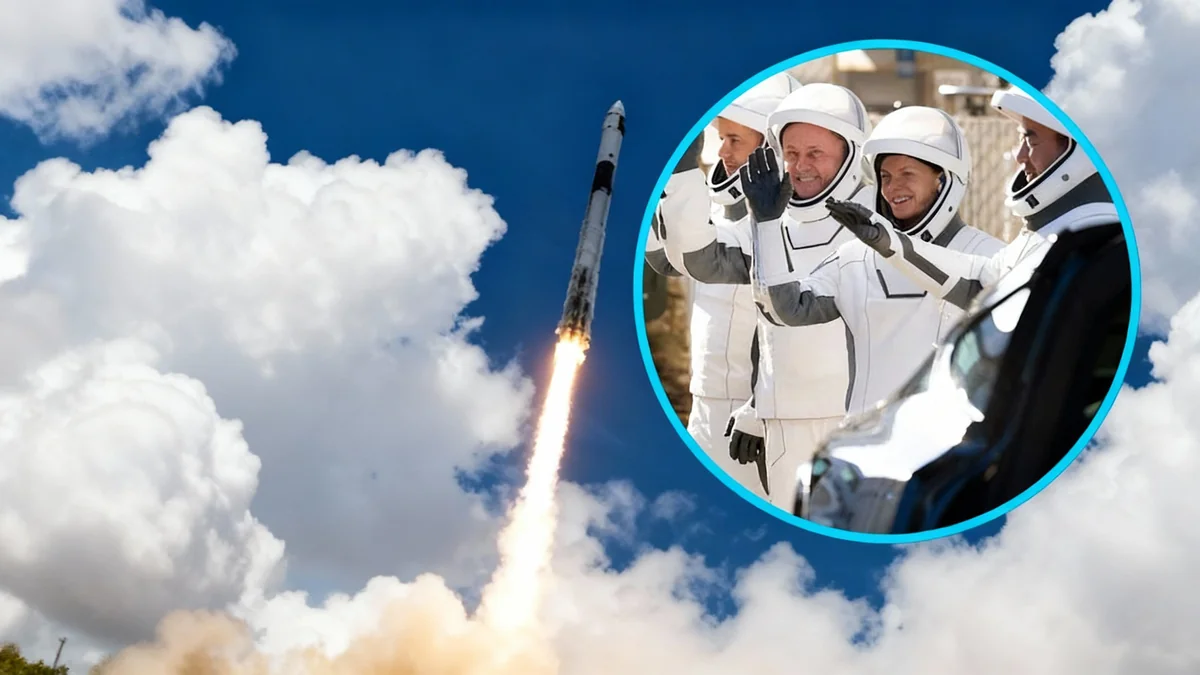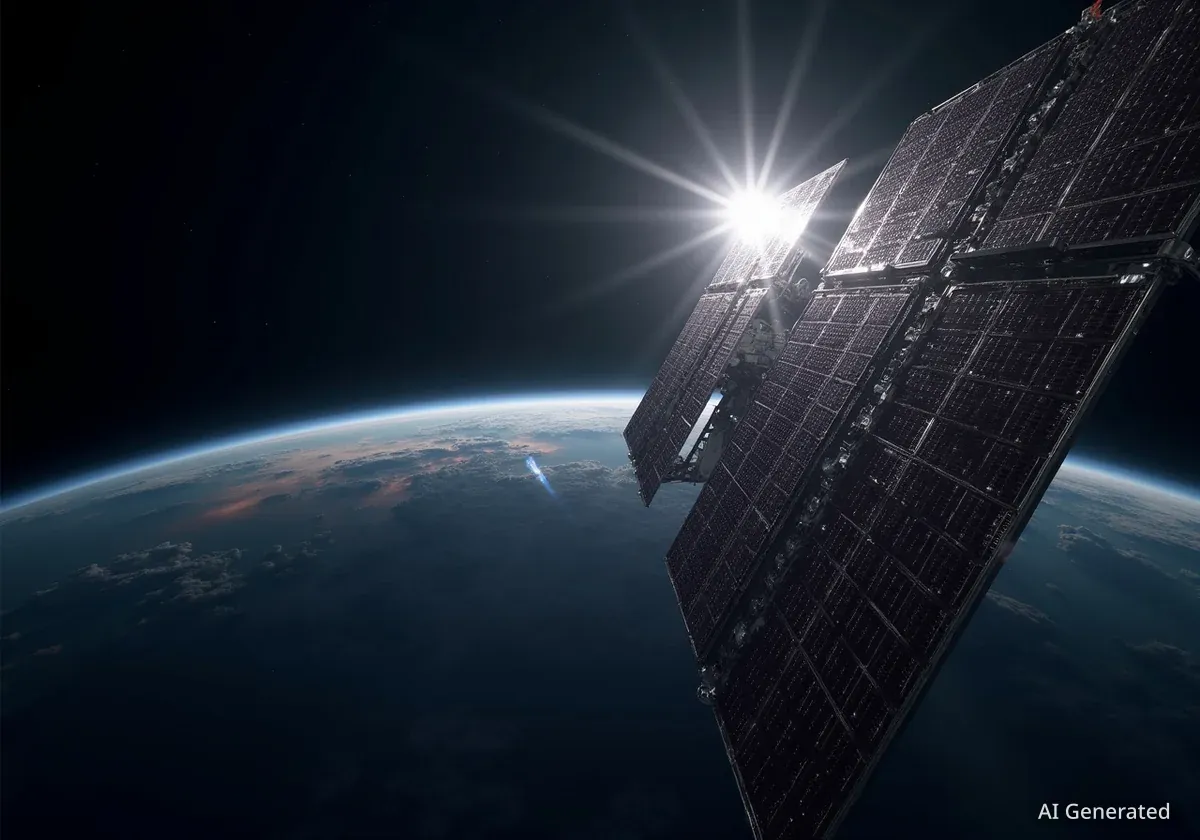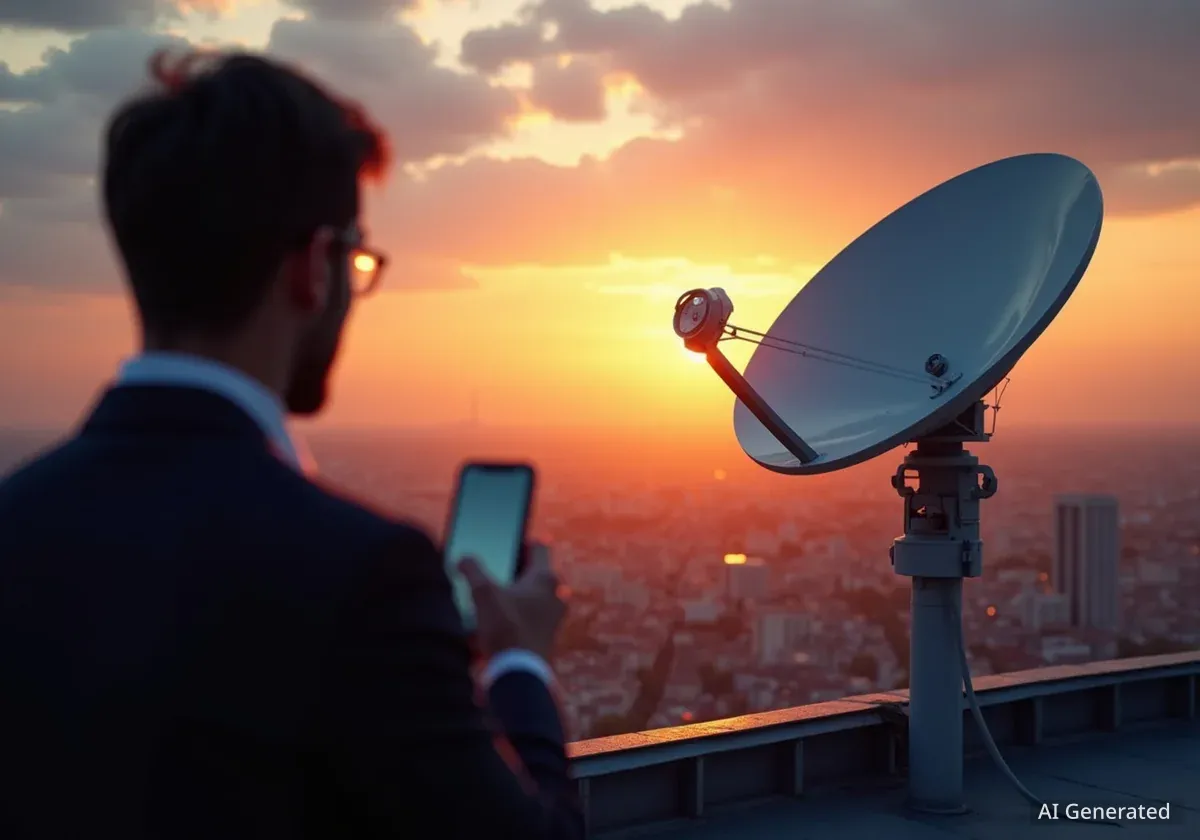A SpaceX Crew Dragon capsule carrying an international team of four astronauts has successfully docked with the International Space Station (ISS). The crew, known as Crew-11, will spend approximately six months aboard the orbiting laboratory conducting scientific research and technology demonstrations.
The docking maneuver was completed at 06:27 GMT on Saturday while the station was orbiting high above the southeast Pacific Ocean. This mission marks the eleventh operational crew rotation flight for NASA's Commercial Crew Program, which utilizes private companies like SpaceX for astronaut transport.
Key Takeaways
- SpaceX's Crew-11 mission successfully docked with the International Space Station.
- The international crew includes two NASA astronauts, one JAXA astronaut, and one Roscosmos cosmonaut.
- The four-person crew will conduct a six-month science mission aboard the ISS.
- Key research includes simulating lunar landings for the Artemis program and studying microgravity's effect on crop growth.
A Successful Docking High Above Earth
The journey for Crew-11 began with a launch from NASA's Kennedy Space Center in Florida. The Crew Dragon capsule, propelled by a Falcon 9 rocket, traveled through Earth's orbit before performing a series of precise maneuvers to rendezvous with the ISS.
SpaceX confirmed the successful link-up in a social media post. Communications between the incoming crew and the astronauts already on the station highlighted the smooth arrival.
"We have cold drinks, hot food and we are waiting for you. See you soon," the existing ISS crew communicated shortly after contact was established.
In response, astronaut Mike Fincke confirmed their arrival on behalf of the new team.
"Hello space station, Crew-11 is here and we are very happy to join you," Fincke replied.
The successful docking signifies another milestone in the partnership between NASA and private aerospace companies, ensuring continuous human presence and research on the ISS.
NASA's Commercial Crew Program
The Commercial Crew Program was initiated by NASA to develop and operate safe, reliable, and cost-effective crew transportation to and from the International Space Station. By partnering with private companies like SpaceX and Boeing, NASA has ended its reliance on foreign launch systems and fostered a competitive American commercial spaceflight industry. This mission is the eleventh such operational flight contracted to SpaceX.
Meet the International Crew-11 Astronauts
The Crew-11 mission showcases ongoing international cooperation in space. The team is composed of astronauts from three different space agencies, bringing a diverse set of skills and experiences to the station.
The four crew members are:
- Zena Cardman (NASA): An American astronaut serving as the mission's commander.
- Mike Fincke (NASA): A veteran American astronaut serving as the pilot.
- Kimiya Yui (JAXA): An astronaut from the Japan Aerospace Exploration Agency.
- Oleg Platonov (Roscosmos): A cosmonaut from the Russian state space corporation.
This diverse team will integrate with the astronauts already aboard the ISS, contributing to the station's multinational research objectives and maintenance tasks over their half-year tour of duty.
Science and Exploration on the Mission Agenda
During their six-month stay, the Crew-11 astronauts will be engaged in a wide array of scientific experiments and technology demonstrations. Their work is designed to benefit life on Earth and prepare for future human exploration missions deeper into space.
Preparing for a Return to the Moon
A significant portion of their research will support NASA's Artemis program, which aims to establish a sustainable human presence on and around the Moon. The crew will conduct simulations of lunar landing scenarios, focusing on potential operations near the Moon's south pole.
They will also test how microgravity affects an astronaut's ability to pilot spacecraft, gathering crucial data for the design and operation of future lunar landers. These experiments are vital for ensuring astronaut safety and mission success as humanity prepares to return to the lunar surface.
Focus on Agriculture in Space
One unique experiment involves studying the effects of microgravity on plant growth. The crew brought pomegranates from Armenia aboard the station. These fruits will be compared to a control group left on Earth to understand how the space environment influences crop development, a key challenge for long-duration space missions to Mars and beyond.
Advancing Scientific Knowledge
Beyond lunar preparations, the crew will work on hundreds of experiments in biology, human physiology, physics, and materials science. The ISS provides a unique microgravity environment that allows scientists to study phenomena in ways not possible on Earth. The results of this research can lead to advancements in medicine, technology, and our fundamental understanding of the universe.
The ISS A Hub for International Cooperation
The International Space Station has been continuously inhabited by humans since November 2000, serving as a premier microgravity laboratory. It stands as a testament to international collaboration, with primary partners including the United States, Russia, Europe, Japan, and Canada.
The station began its assembly in orbit in 1998. While its original retirement was planned for 2024, NASA has certified its operations to continue until at least 2030, ensuring it remains a platform for groundbreaking science and international partnership for years to come.
The arrival of Crew-11 continues this legacy, bringing fresh perspectives and skills to the ongoing mission of discovery that defines the International Space Station.





